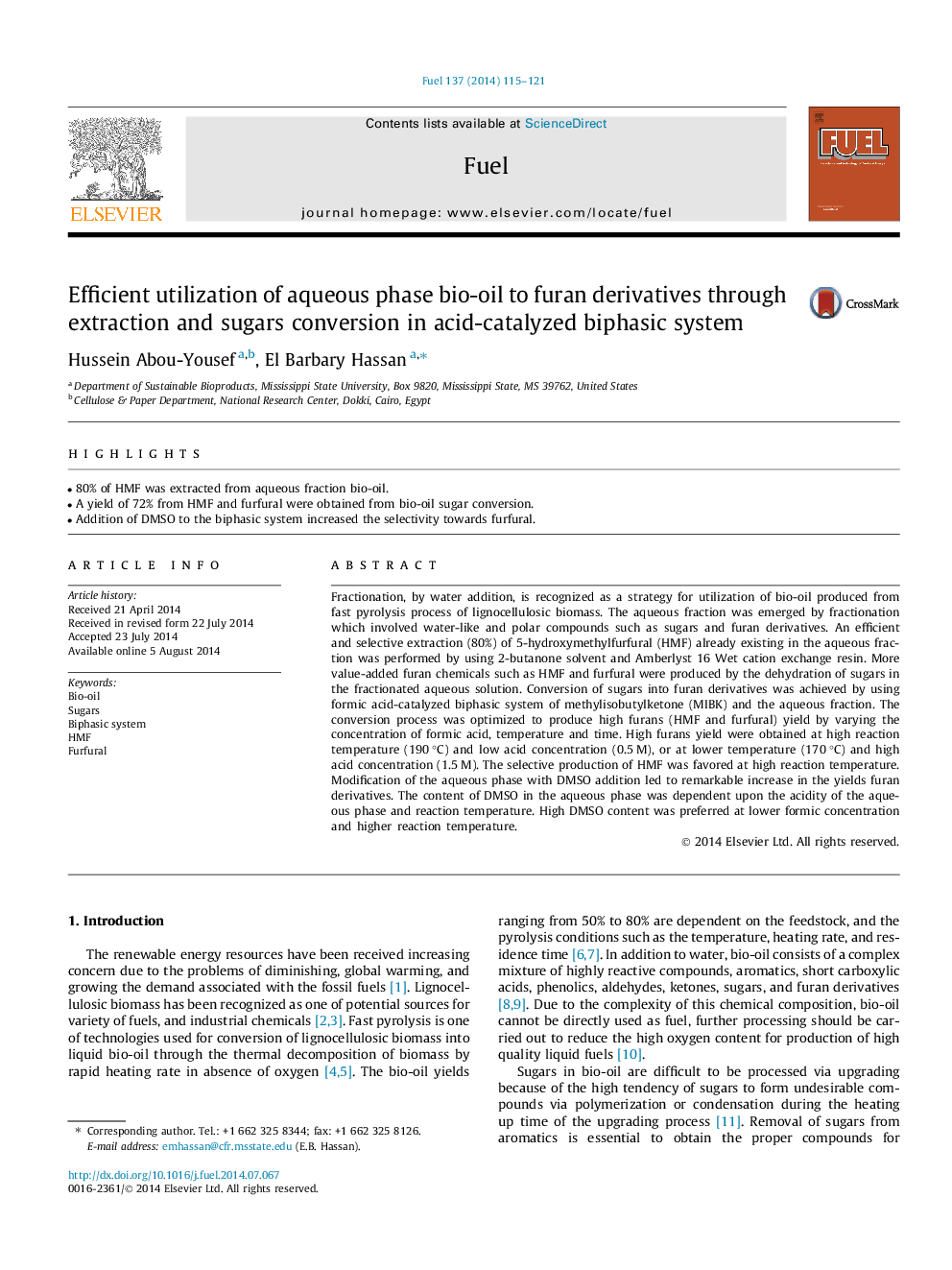| کد مقاله | کد نشریه | سال انتشار | مقاله انگلیسی | نسخه تمام متن |
|---|---|---|---|---|
| 206031 | 461136 | 2014 | 7 صفحه PDF | دانلود رایگان |
• 80% of HMF was extracted from aqueous fraction bio-oil.
• A yield of 72% from HMF and furfural were obtained from bio-oil sugar conversion.
• Addition of DMSO to the biphasic system increased the selectivity towards furfural.
Fractionation, by water addition, is recognized as a strategy for utilization of bio-oil produced from fast pyrolysis process of lignocellulosic biomass. The aqueous fraction was emerged by fractionation which involved water-like and polar compounds such as sugars and furan derivatives. An efficient and selective extraction (80%) of 5-hydroxymethylfurfural (HMF) already existing in the aqueous fraction was performed by using 2-butanone solvent and Amberlyst 16 Wet cation exchange resin. More value-added furan chemicals such as HMF and furfural were produced by the dehydration of sugars in the fractionated aqueous solution. Conversion of sugars into furan derivatives was achieved by using formic acid-catalyzed biphasic system of methylisobutylketone (MIBK) and the aqueous fraction. The conversion process was optimized to produce high furans (HMF and furfural) yield by varying the concentration of formic acid, temperature and time. High furans yield were obtained at high reaction temperature (190 °C) and low acid concentration (0.5 M), or at lower temperature (170 °C) and high acid concentration (1.5 M). The selective production of HMF was favored at high reaction temperature. Modification of the aqueous phase with DMSO addition led to remarkable increase in the yields furan derivatives. The content of DMSO in the aqueous phase was dependent upon the acidity of the aqueous phase and reaction temperature. High DMSO content was preferred at lower formic concentration and higher reaction temperature.
Journal: Fuel - Volume 137, 1 December 2014, Pages 115–121
